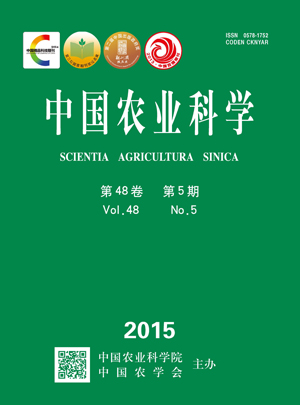-
Gene Cloning and Expression Analysis of 5-HT Receptors in Silkworm (Bombyx mori)
- LI Hai-yin, LI Yan, CHEN Xi, CHEN Peng, CHEN Ping
-
Scientia Agricultura Sinica. 2015, 48(5):
987-1001.
doi:10.3864/j.issn.0578-1752.2015.05.17
-
 Abstract
(
673 )
Abstract
(
673 )
 HTML
(
7 )
HTML
(
7 )
 PDF (20736KB)
(
2732
)
PDF (20736KB)
(
2732
)
 Save
Save
-
References |
Related Articles |
Metrics
【Objective】The objective of this study is to clone four kinds of 5-HT receptor genes and investigate their expression in different tissues of Bombyx mori, and to provide basic knowledge for further functional studies of these 5-HT receptor genes.【Method】Four 5-HT receptors were cloned based on genome database and using RT-PCR techniques. The bioinformatic method was used to analyze 5-HT receptor genes of B. mori and homology between species. The expression profiles of these genes in different tissues of larvae and adults were investigated by using semi-quantitative real-time PCR.【Result】Based on the predicted gene sequences, special primers were designed to clone the 5-HT receptor genes. Four 5-HT receptor genes 5-HT1ABm, 5-HT1BBm, 5-HT2Bm and 5-HT7Bm (GenBank accession number: KM236100-KM236103) were cloned. The open reading frame (ORF) of 5-HT1ABm, 5-HT1BBm, 5-HT2Bm and 5-HT7Bm was 1 395, 1 341, 1 881 and 1 497 bp, which encoded a polypeptide of 464, 446, 626 and 498 amino acids, respectively. They were typical of G protein-coupled receptors with seven transmembrane protein domains. The sequences were aligned and the phylogenetic tree of four 5-HT receptors was analyzed with other insects and vertebrates. Similarity of the amino acid sequence of 5-HT1ABm, 5-HT1BBm, 5-HT2Bm and 5-HT7Bm was only 30.4%. While, the similarity of 5-HT1A, 5-HT1B, 5-HT2 and 5-HT7 were 45.4%, 61.4%, 48.4%, and 54.1%, respectively in insects. In addition, 5-HT receptors had high homology and more conservative transmembrane region than non-transmembrane region in insects and vertebrates. The phylogenetic tree indicated that the same type receptors from different species got together, then the same receptor formed branch as species genetic relationships. The evolutionary relationships of 5-HT receptors in silkworm were close to Manduca sexta. The results of semi-quantitative real-time PCR showed that 5-HT1Abm, 5-HT1BBm expressed in all tissues in larvae, 5-HT2Bm only had expression in head, ventral chain and testis in larvae, 5-HT7Bm had expression in head, ventral chain, midgut, fat body, testis and ovary in larvae. 5-HT1ABm, 5-HT1BBm,and 5-HT7Bm expressedin other tissues except head in male of adults, whereas 5-HT7Bm in the reproductive system expression of male adults was significantly higher than other tissues. 5-HT2Bm did not express in adult.【Conclusion】Four 5-HT receptor genes were cloned in silkworm. They have more conservative in insects and vertebrates, and homologous relationships are close to M. sexta. The results of semi-quantitative real-time PCR showed that the tissue expression patterns were diverse.









